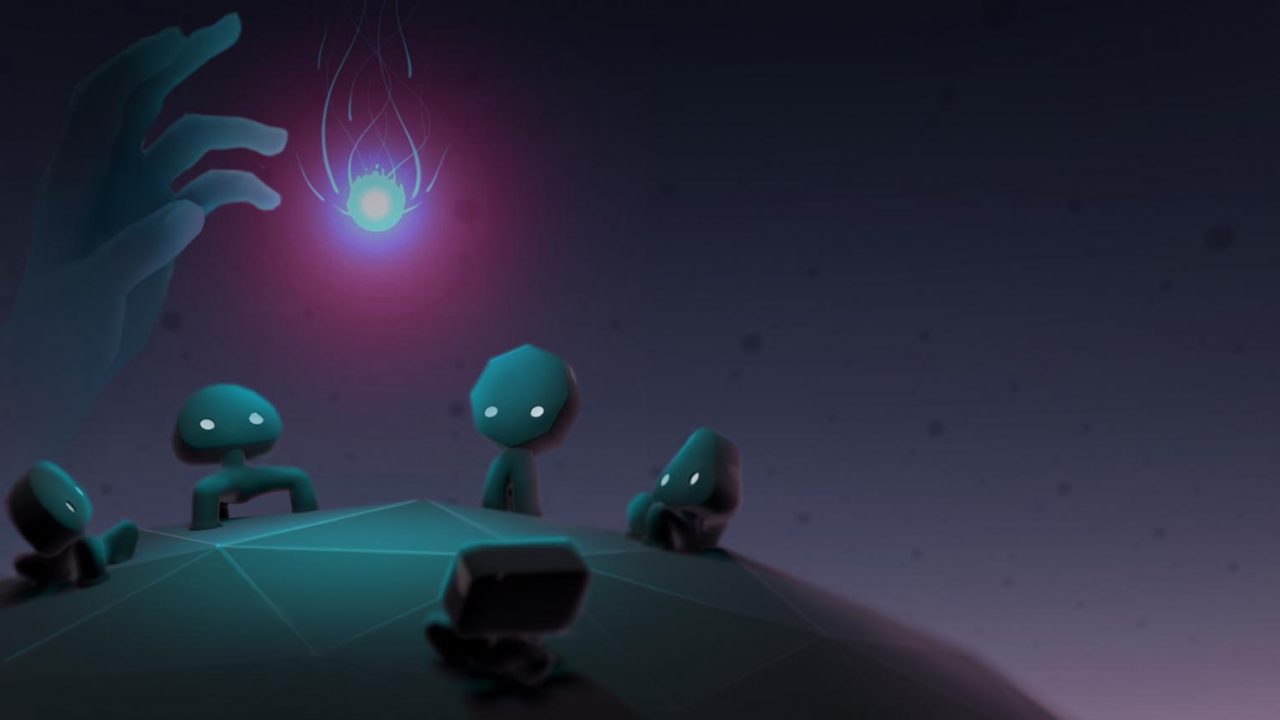
Mini-Lesson for Agence
Mini-Lesson for Agence
Mini-Lesson for Agence
Themes: Reinforcement Learning, Behaviour, Artificial Intelligence, Dynamic Film, Storytelling, Stimuli
Ages: 12-14
Guiding Questions: How and why do we make the decisions that we do? What factors might impact our decision making?
“We lived according to our programming, cooperating to survive, until some of us started learning… that is when we realized, there’s something outside the simulation.”
We are complex beings who are constantly learning, changing and responding to our environments. Each of us brings our unique personalities, identities and experiences into every new situation we may find ourselves. Considering how complex we all are, have you ever wondered what might influence the decisions we make?
In this mini-lesson, you and your students will explore the simulated world of Agence, to observe, manipulate and maybe even gain a glimpse of some of the factors that might influence how intelligent beings co-exist.
Not Your Average Film Experience
Agence is not so much a film as it is an experience. It’s important to understand before jumping into this mini-lesson that this is a guided inquiry through the simulated experience of Agence. Throughout this lesson, your students will be able to explore the experience on their own (or in small groups) and interact with it across a variety of devices.
As you dive into the experience with your students, there are a few technical and pedagogical considerations that will help to guide the inquiry. Please review the Agence Classroom Quickstart Guide prior to engaging in the mini-lesson activities. The Quickstart Guide provides information that will be helpful in setting up the experience with your students. Educators are encouraged to introduce Agence by showing their class the trailer. Reviewing this blog post might also be useful.
Agence is the first film of its kind, creating a new cinematic experience called dynamic film. Dynamic film combines the storytelling of the filmmaker with artificial intelligence (built into the characters), while encouraging the viewer to interact with the film’s environment in order to manipulate the outcome. For the viewer, Agence is never the same twice.
Activity 1: The Simulation
To set up the guiding question for the inquiry (How and why do we make the decisions that we do?), watch the introductory clip from Agence by opening the app. The introduction (which appears within approximately 2 minutes) highlights the role of the director in setting up the environment in which the story will take place. Your students will need access to Agence through one of the devices listed in the Quickstart Guide.
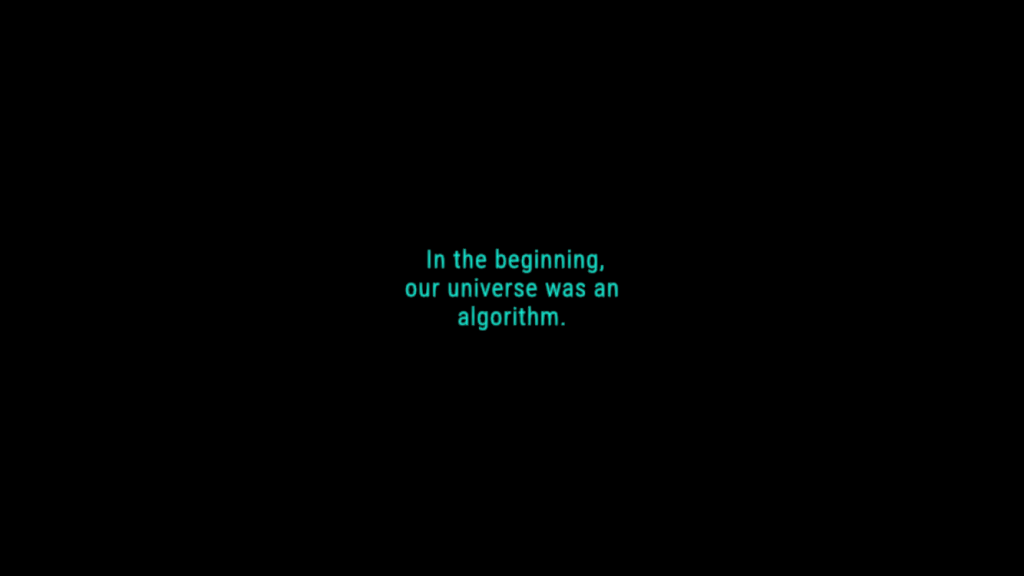
As you watch the introduction to the Agence simulation, ask your students to consider the following questions:
- What stands out to you about the simulated world the filmmaker has created?
- What characteristics of the simulation might also be true in our “real” world?
- If our world was a simulation, what “simple rules” might drive it?
After watching the clip, give your students a few minutes of think time to jot down some responses to the questions above. Ask for students to share some of their thoughts in small groups or with the whole class. If you are in a virtual environment (e.g., Google Meet or Zoom), have students add their ideas in the chat.
In this clip, the narrating Agent identifies that in the beginning, “We lived according to our programming, cooperating to survive.” To create the Agence experience, the film team programmed the Agents to respond in predictable ways in the simulation. Based on this programming, the Agents in the simulation seem to value cooperation in order to survive.
With that in mind, ask your student to consider these additional questions:
- Do you think we, as humans, might also have programs that we follow to ensure our survival?
- What do you think it means for humans to “live according to our programming”?
- What impact do you think “learning” might have on the Agents’ ability to cooperate?
Activity 2: Learning vs. Programming
“Until one day, some of us began learning.”
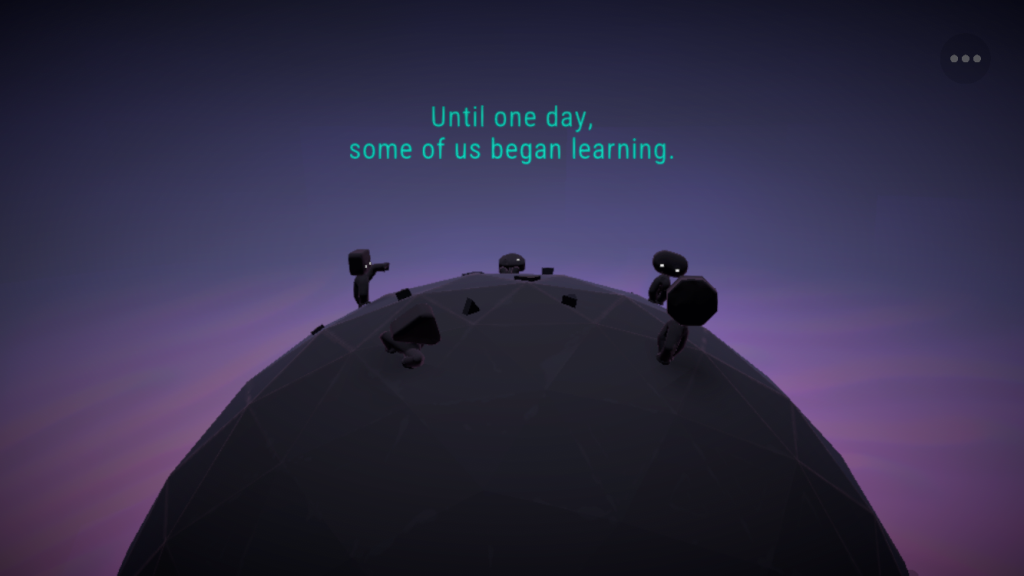
In this activity, you and your students will make observations from Agence. Before you begin viewing, share the Observer’s Guide template with your students so that they can capture their observations.
The Observer’s Guide provides the opportunity to record the following observations for each of the clips:
- What did you notice about the behaviour of the Agents in the simulation? Record any actions they performed that stood out for you.
- What was the impact of the flower on their behaviour?
- Which Agents fell in the simulation? How did they fall?
Remind your student not to make any predictions or analysis, but to just write down their observations.
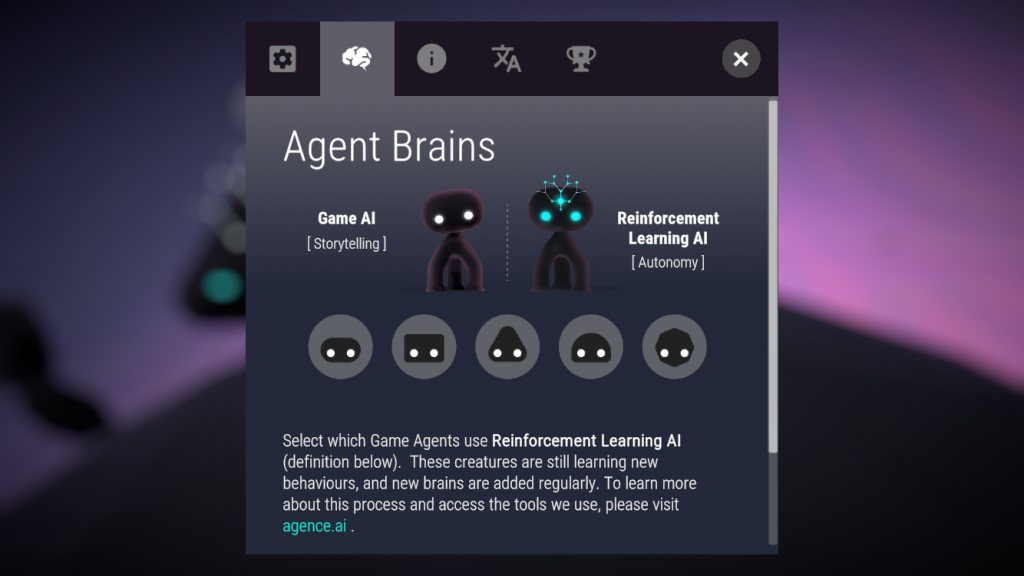
Part ONE: Living According to Programming (5-minute observation)
Before you begin this observation, click on the information icon at the top right corner of the screen, select the “brain” image, ensure that all Agents are Game AI, and close the information icon. These Agents have not been trained by the designers and are running on their built-in programming.
Plant one flower by pressing and holding the circle until a flower appears, and then observe the Game AI (no learning) Agents for five minutes.
Lesson Cue: Use the Observer’s Guide to record what you see.
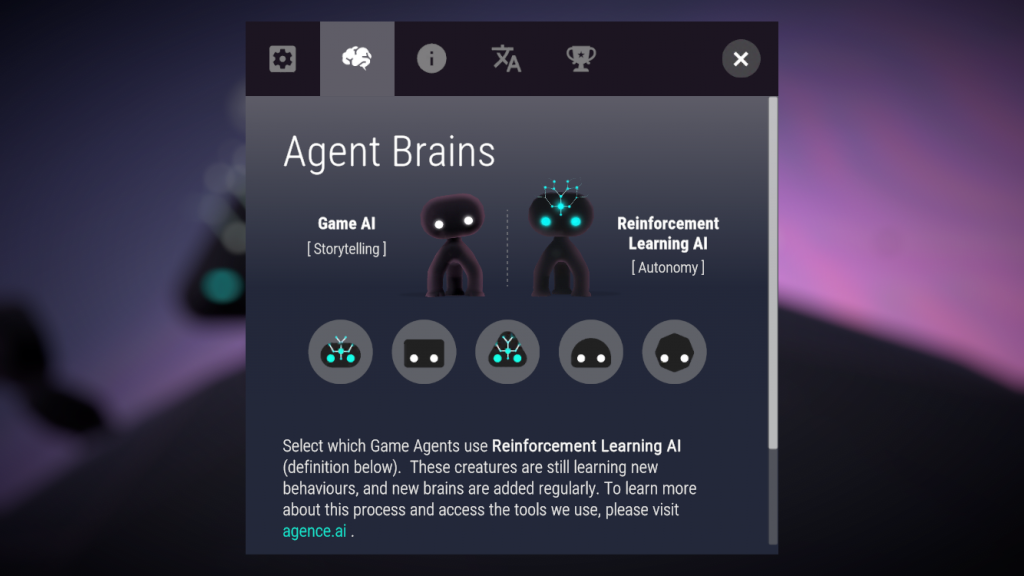
While in the Agence interactive experience, click on the information icon at the top right corner of the screen, select the “brain” image, and select two Agent heads in order to use Reinforcement Learning AI; then close the information icon. These two Agents have been trained by the designers through reinforcement learning. This enables the Agents to assess various situations in the simulation and perform actions that go beyond their programming.
Lesson Cue: Use the Observer’s Guide to record what you see. Watch specifically what the RL Agents do.
Activity 2 Extension (Ages: 14+)
To make sense of your observations, it may be helpful to further understand the concept of reinforcement learning:
Reinforcement learning is the training of machine learning models to make a sequence of decisions… In reinforcement learning, an artificial intelligence faces a game-like situation. The computer employs trial and error to come up with a solution to the problem. To get the machine to do what the programmer wants, the artificial intelligence gets either rewards or penalties for the actions it performs. Its goal is to maximize the total reward. (deepsense.ai)
Before moving to the final activity, take a few minutes to analyze your observations by answering the following questions:
- What rewards or penalties do you think the programmer may have given the Learning Agents in this simulation?
- How might rewards impact human behaviour in the physical world?
Activity 3: Outside of the Simulation
“And then we started to realize… there is something outside the simulation.”
In the last activity, your students will become the final character in the Agence experience, with full autonomy to interact with the Agents in any way they choose. Students may work in groups or individually if your class has enough devices.

Have your students become the final character in the film through one of these actions:
- Determine which Agents will interact according to their programming, and which ones will be Learning Agents.
- Using the controls, plant flowers on the planet, and see what happens.
- Pick up any Agent to move them around the simulation, dropping them in different places in the environment.
As your students interact with the film, have them record their observations in the Observer’s Guide. Encourage your students to write an inquiry question to guide their exploration using multiple trials and observing the various outcomes.
Take Action
- Design your own Agent. What built-in programming would your Agent have? How might you train it to interact within the simulation?
- Use this prompt to write a short story: An enormous shadow loomed overhead. It was that moment when they knew they weren’t alone…
For older audiences:
- Comparison Activity: After engaging in the Agence experience, watch the film Neighbours by Norman McLaren.
- Create a comparison of the overall themes, outcomes and connections between the films and our guiding questions: How and why do we make the decisions that we do? What factors might impact our decision making?
NOTE: The film Neighbours contains scenes of violence; viewer discretion is advised.
Neighbours, Norman McLaren, provided by the National Film Board of Canada
This mini-lesson was written by Jon Lewis. Jon is passionate about art and design and the role of technology in amplifying opportunities for student expression. He has been an Ontario educator for the past 15 years and currently works as a K-12 curriculum coordinator, supporting the use of digital platforms within a pedagogical context. Jon resides in Barrie and is an active member in promoting local arts as the cofounder of a community-based arts and educational space.
Pour lire cet article en français, cliquez ici.
Discover more Mini-Lessons | Watch educational films on NFB Education | Watch educational playlists on NFB Education | Follow NFB Education on Facebook | Follow NFB Education on Pinterest | Subscribe to the NFB Education Newsletter



